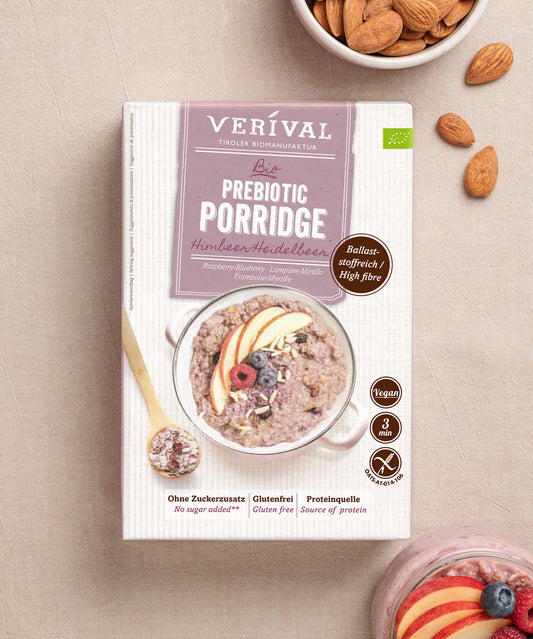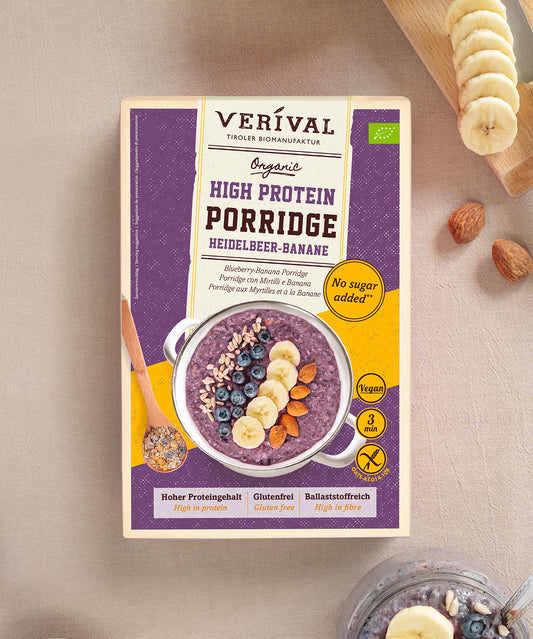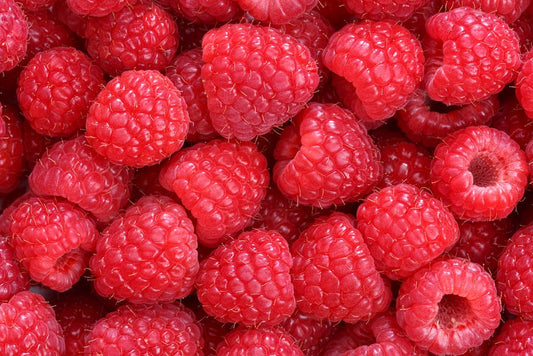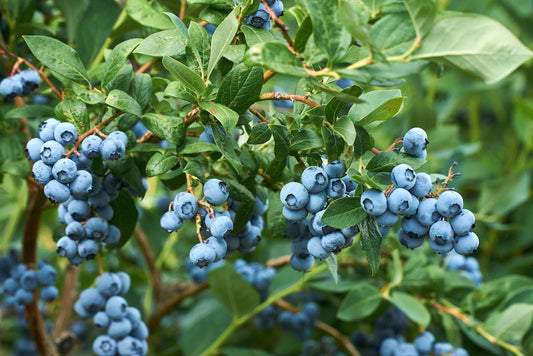Proteins are essential for our body. While the protein needs of the general population are usually already covered unconsciously, athletes should pay more attention to their increased needs.
However, endurance athletes in particular often underestimate their protein requirements. In order to supply the body with sufficient protein, it is essential to know the most important sources of protein. Because sport and an ideal diet can sustainably increase performance.
The ideal companions for everyday sports – the Verival Sport range
Why proteins are so important
Protein is one of the most important nutrients for our body. Because proteins cannot be replaced. While you can reduce your fat intake in favor of more carbohydrates and still be full of energy, there is no suitable substitute for proteins. An adequate protein intake is therefore extremely important – especially if you are active in sports.
But what exactly are proteins responsible for in the human body? For one thing, they give the body its structure and enable movement. This is largely ensured by the muscular system.
For another, proteins occur in the form of regulatory units, such as enzymes, and are thus involved in numerous biochemical reactions in the body. But proteins are also needed to maintain immune function and as an energy source.
Do athletes need more protein?
Short and sweet – yes! Athletes, whether they do endurance or strength sports, have an increased need for dietary protein.
One reason for this is that sporting activities cause minor damage to the musculature, which needs to be repaired. The building blocks of these regeneration processes are, in turn, amino acids, the components of protein.
When choosing protein sources, however, it is important to consider not only the quantity but also the quality. After all, the human body performs best when it is optimally supplied with nutrients.
What makes a good source of protein
A good source of protein is not only characterized by a high proportion of protein (quantity), but also by its composition (quality). In nutritional science, this composition of the protein's components, which are called amino acids, is defined by the concept of biological value.
Simply put, this concept is about the so-called amino acid profile, i.e. the amino acids contained in the protein, corresponding as closely as possible to that of human protein.
This ensures that the protein from food can be better converted into the body's own protein, such as in our muscles.
| Food | Biological value |
| Chicken egg | 100 |
| Pork | 85 |
| Soy Protein | 81 |
| Beef and poultry | 80 |
| Rye flour | 78 |
| Beans and corn | 72 |
| Rice | 66 |
| Oats and lentils | 60 |
However, the numbers are not percentages. Rather, the hen's egg serves as a reference value. However, this value can also be exceeded. This can be seen, for example, from a mixture of milk and potatoes, which together achieve a value of 114.
Animal proteins
As can be seen in the table on biological value, animal protein sources are a good way to sufficiently cover your needs. Nevertheless, more and more athletes are turning to plant-based protein sources. But why is that? If biological value is the be-all and end-all, then what's wrong with animal proteins?
What's wrong with animal protein sources?
Animal protein sources are known to have a high biological value, but this positive property is offset by a number of disadvantages. This means that many animal protein sources contain unhealthy ingredients that are considered harmful to health.
For example, animal protein sources such as meat or sausage contain considerable amounts of saturated fatty acids and cholesterol.
Plant-based proteins
Plant-based proteins have hardly any adverse side effects, unlike animal-based sources of protein. On the other hand, they have a slightly lower biological value on average than their animal-based counterparts. To ensure you are still meeting your needs, you should be familiar with the best sources of plant-based protein.
If you know which high-protein foods you can fall back on and how best to combine them, you no longer need to worry about getting enough.
Cereals as a source of protein
Cereals contain more protein than you might expect at first glance. In particular, whole grains and pseudograins have a significant protein content. Another advantage is that the consumable amount of grain is very high.
Because you rarely eat just 10 grams of pasta. Typical portions are more like 100 to 150 grams. The same applies to oats. They, too, are usually consumed in portion sizes of 50 to 100 grams. This significantly increases the amount of protein actually ingested.
| Grain Variety | Protein content per 100g |
| Wheat bran | 16g |
| Amaranth | 15g |
| Quinoa | 15g |
| Bulgur | 12g |
| Oats | 11g |
Cereals, such as oats, also contain a considerable amount of health-promoting fiber and complex carbohydrates. This ensures long-lasting satiation and a sufficient supply of energy, from which endurance athletes in particular can benefit.
Cereals and pseudo-cereals therefore form the basis of a high-protein plant-based diet. But the real superfoods among vegetarian sources of protein are legumes.
Cereals such as oats form the basis of a high-protein plant-based diet.
Legumes as a source of protein
Legumes, such as beans or lentils, are indispensable in a plant-based diet. Not without reason – because they are not only rich in healthy fiber and minerals, but also have an above-average high protein content.
| Type | Protein content per 100g |
| Red Lentils | 27g |
| Kidney beans | 25 |
| Beluga Lentils | 23g |
| White beans | 21g |
| Chickpeas | 19g |
Beans, for example, quickly reach a whopping 20 to 25 grams of protein per 100 grams. Lentils even surpass these values in some cases, with up to 29 grams of protein per 100 grams.
Equally noteworthy are the versatile chickpeas, which contain almost 20 grams of protein.
Protein-rich brain foods – nuts and seeds
Largely known for their protective function for the brain, but often underestimated in terms of their protein content – nuts and seeds. Admittedly, you rarely consume more than a handful of nuts and seeds. Nevertheless, this supposedly small amount should not be underestimated.
A handful of nuts and seeds alone can contain up to 10 grams of protein. The great advantage of these protein sources is that they can be easily and diversely integrated into your daily diet. For example, chia seeds are particularly good as a topping for porridge, yoghurt and the like.
Nuts, on the other hand, can be used not only in their original form as a topping, but can also be processed into a tasty nut butter. Almond butter, for example, is particularly suitable as a healthy spread on bread or a lower-carbohydrate Green Protein Waffle. But nut butter is also suitable in high-protein shakes, in cake dough or as an additional source of flavor in porridge.
You can use almond butter to refine your breakfast - find out more
Sports products from Verival – the ideal protein breakfast
You will find the best of the world of plant-based proteins in our Verival Sport Range. To optimize the biological value in our products, the protein-rich ingredients have been combined in such a way that they enhance each other.
The best-selling Sport Protein Porridge with cocoa-banana flavour, for example, consists of a combination of wholegrain oat flakes, sunflower and pumpkin seed protein powder and flaxseed. This product provides you with all the essential amino acids you need at breakfast time.
























